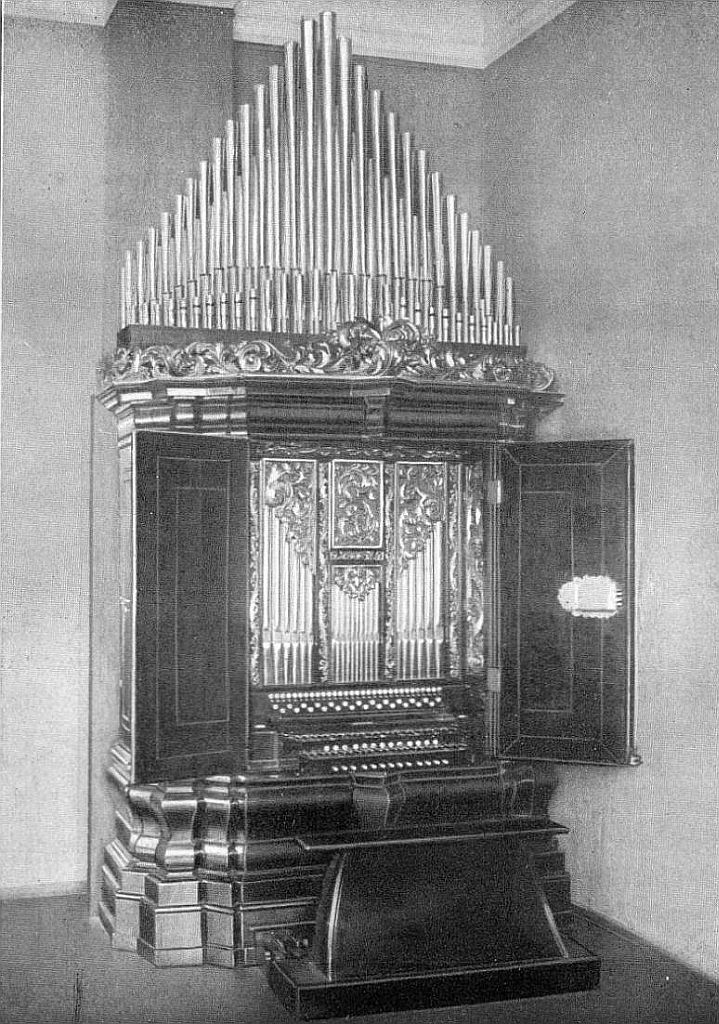Ausführliche Beschreibung der vorgewählten Orgel

Bild: Steinmeyer Orgelbau
Oberschongau, Die Schweiz / La Suisse (Luzern) - Wallfahrtskirche Oberschongau
Gemeinde: Schongau
Adresse: Oberschongauerstrasse, 6288, Schongau
Beschreibung nr.: 2033731.
Gebaut von: Orgelbau Kuhn AG (1964)
Kurze Übersicht der Orte, an denen die Orgel gestanden hat
Technische Daten
Disposition
Manual: Gedackt 8' (B/D), Principal 4' (B/D), Rohrflöte 4' (B/D), Octävlein 2' (B/D), Larigot 1 1/3' (B/D), Scharf 3-4 fach (1') (B/D).

Bild: Steinmeyer Orgelbau
Oberschongau, Die Schweiz / La Suisse (Luzern) - Wallfahrtskirche Oberschongau
Gemeinde: Schongau
Adresse: Oberschongauerstrasse, 6288, Schongau
Beschreibung nr.: 2033731.
Gebaut von: Orgelbau Kuhn AG (1964)
| Jahr | Orgelbauer | Opus | Aktivität | 1685 | David Jacob Weidner | Neubau | 1900 | Orgelbauwerkstatt März | Übersetzung | 1901 | Orgelbauwerkstatt März | Umbau | 1909 | G.F. Steinmeyer und Co. | 1040 | Neubau im alten Gehäuse | 1964 | Orgelbau Kuhn AG | Neubau im alten Gehäuse |
- In 1910 G.F. Steinmeyer & Co. as opus 1040 a salon organ for the Musiksalon of Dr. Graf Felix von Saëdt, secret chamberlain of the Pope and residing in Munich. The old prospect, which formed the core of the front of the salon organ, was acquired by Von Saëdt in 1898. It was an old positive with four stops, originating from the Marienkapelle of the Dom in Augsburg, that had been constructed in 1685 by David Jacob Weidner. The organ builder Max Maerz (Munich) repaired it and placed it in Von Saëdt's salon in 1900.
- Soon he was not satisfied with the sound of the instrument. In 1901, Maerz completely renewed the organ and expand it to eighteen stops on two manuals, with mechanical cone chests. Two prominent people gave the first concert: the organist Karl Straube, accompanied on the violin by the painter Paul Klee.
- In 1908 a further conversion followed, now by Steinmeyer, with pneumatic Taschenladen. The advisor was Emile Rupp. The organ became a well-known instrument for the international organ scene in the time before the First World War: Charles-Marie Widor and Albert Schweitzer played it. In 1918 Von Saëdt had to leave his home in Munich. He donated the organ to a fellow priest in the Engelberg monastery, where it was consecrated in 1920. The relocation did not do the organ any good. In 1945 it was decommissioned and demolished. The historic Augsburg organ case was stored in the monastery.
- In 1964 this organ case, provided by Kuhn with a new interior with six stops, was placed in the Wallfahrtskirche Ober-Schongau (LU).
Kurze Übersicht der Orte, an denen die Orgel gestanden hat
| 1685 | Augsburg | Hohe Domkirche Sankt Maria, Marienkapelle |
| 1898 | München | Felix von Saedt residence |
| 1920 | Engelberg | Benediktinerkloster (Abtei) |
| 1961 | Oberschongau | Wallfahrtskirche |
Technische Daten
| Anzahl Register pro Manual | |
| - Manual | 6 |
| Gesamtzahl der Stimmen | 6 |
| Tonumfang Manual | C-g''', division between b° and c' |
| Tastentraktur | Mechanical |
| Registertraktur | Mechanical |
| Windlade(n) | Slider chests |
Disposition
Manual: Gedackt 8' (B/D), Principal 4' (B/D), Rohrflöte 4' (B/D), Octävlein 2' (B/D), Larigot 1 1/3' (B/D), Scharf 3-4 fach (1') (B/D).
| Übrige dispositiondaten | |
|---|---|
| Mehrere dispositionen |
The specification of the Steinmeyer organ of 1909-1910 was: I. Manual (C-g'''): Principal 8', Bourdon 8', Dolce 8', Oktav 4', Rohrflöte 4', Sifflöte 2', Superquinte 1 1/3', Mixtur 4 fach (2'), Clarinette 8', Tremolo. Im Schweller: Lieblich Gedeckt 16', Soloflöte 8', Unda maris 8', Quintatön 8', Cornett 2-6 fach (8'). Im besonderen Schweller: Vox Humana 8', Tremolo für Vox Humana. II. Manual (im Schweller) (C-g'''): Doppelgedeckt 8', Echobourdon 8', Viola di Gamba 8', Vox Coelestis 8', Principal 4', Flûte d'Amour 4', Piccolo 2', Larigot 2 fach (2'), Cimbel 3 fach (1'), Trompete 8', Tremolo. Pedal (im Schweller) (C-d'): Subbaß 16', Gedecktbaß 16' - transmissie, Violoncello 8'. Couplers: I. Manual - II. Manual, Pedal - I. Manual, Pedal - II. Manual, I. Manual - II. Manual Sub, I. Manual - II. Manual Super, II. Manual - II. Manual Sub, II. Manual - II. Manual Super. Accessories: 1 freie Kombination, Tutti, Generalcrescendo. |
| Weblinks |
https://www.orgelbau.ch/op=110770 http://peter-fasler.magix.net/public/LUProfile4/lu_schongau_wallfahrt.htm |
